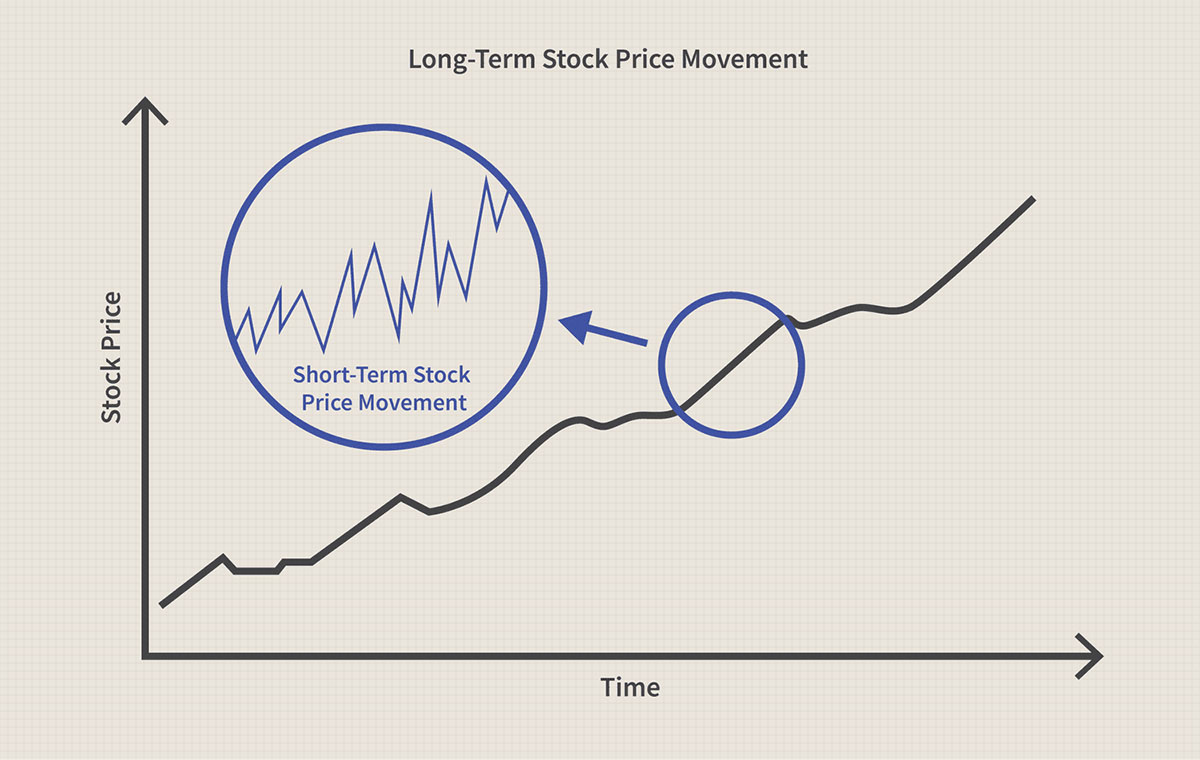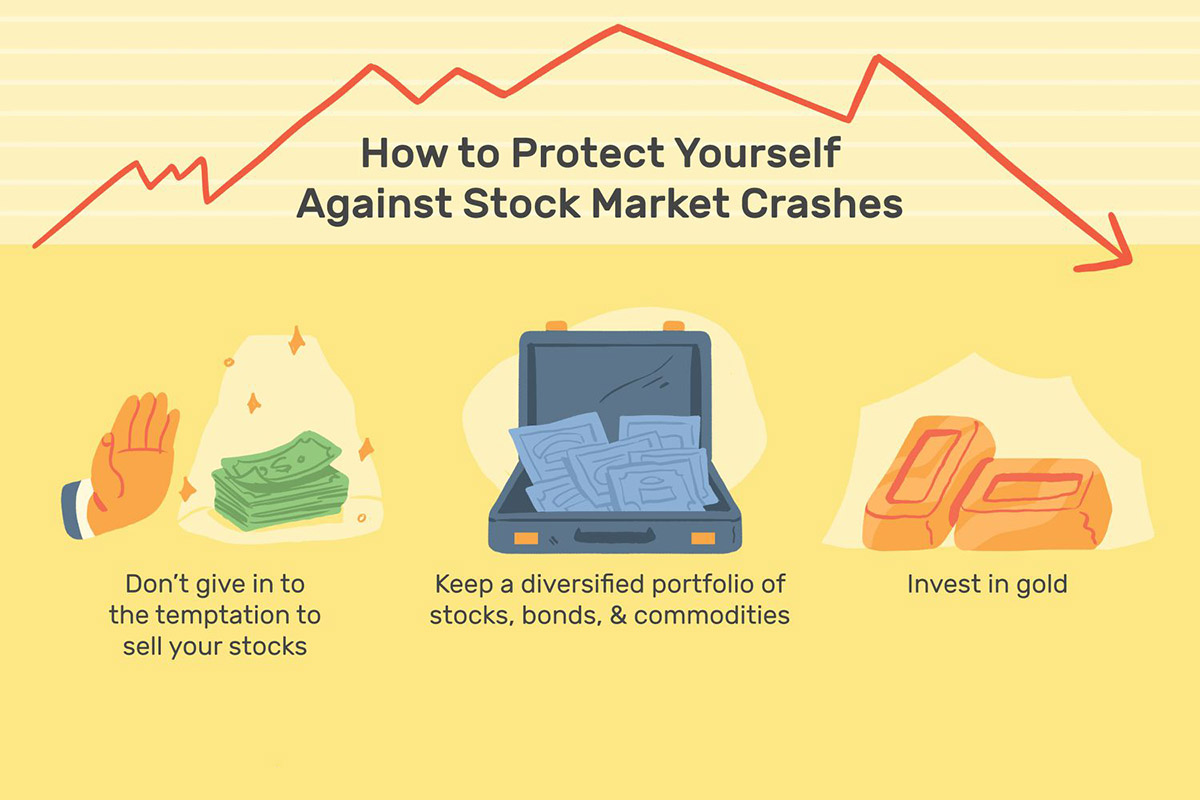

Finance
How To Outperform Stock Market
Published: November 3, 2023
Learn how to outperform the stock market with our comprehensive finance guide. Master essential strategies and optimize your investments. Enhance your financial skills today!
(Many of the links in this article redirect to a specific reviewed product. Your purchase of these products through affiliate links helps to generate commission for LiveWell, at no extra cost. Learn more)
Table of Contents
Introduction
Welcome to the world of investing and the stock market! The stock market can be a lucrative avenue for growing your wealth, but it can also be intimidating and overwhelming, especially for beginners. As a new investor, you may have heard stories of individuals who have achieved significant returns on their investments, but you may also be wary of the risks involved.
The key to success in the stock market lies in understanding the fundamental principles of investing, conducting thorough research, and developing a solid investment strategy. In this article, we will provide you with valuable insights and guidance on how to outperform the stock market.
Before diving into the intricacies of the stock market, it’s essential to have a basic understanding of what it is and how it works. The stock market is a place where individuals and institutions buy and sell shares of publicly traded companies. These shares represent ownership in these companies, and their prices fluctuate based on a variety of factors, such as market conditions, company performance, and investor sentiment.
Investing in the stock market can offer various opportunities, such as capital appreciation (the increase in the value of your investment) and dividend income (profits distributed to shareholders by some companies). However, it’s crucial to recognize that investing in stocks also comes with risks, including the potential for losses. Therefore, it’s important to approach the stock market with a disciplined and informed mindset.
Throughout this article, we will explore different aspects of investing in the stock market and provide practical tips to help you outperform the market. Whether you’re a novice investor or looking to refine your investment approach, the strategies and insights shared here will help you navigate the stock market with confidence and improve your investment performance.
Understanding the Stock Market
Before you start investing in the stock market, it’s important to have a solid understanding of how it works. The stock market is a complex ecosystem where buyers and sellers trade shares of publicly listed companies. Here are some key concepts to help you understand the basics:
- Stock Exchanges: Stock exchanges, such as the New York Stock Exchange (NYSE) and NASDAQ, are physical or virtual platforms where trading takes place. They provide a marketplace for buyers and sellers to interact and execute trades.
- Stocks: Stocks, also known as equities or shares, represent ownership in a company. When you buy a stock, you become a shareholder and have the potential to benefit from the company’s growth and profitability.
- Indices: Stock market indices, like the S&P 500 or the Dow Jones Industrial Average, are measures of the overall performance of a group of stocks. They provide a benchmark for comparing the performance of individual stocks or your investment portfolio.
- Market Capitalization: Market capitalization refers to the total value of a company’s outstanding shares. It is calculated by multiplying the company’s share price by the total number of shares outstanding. Market capitalization categorizes companies as large-cap, mid-cap, or small-cap.
- Price-to-Earnings (P/E) Ratio: The P/E ratio is a valuation metric that compares a company’s stock price to its earnings per share (EPS). It helps investors assess the relative value of a stock and determine if it is undervalued or overvalued.
- Dividends: Some companies distribute a portion of their profits to shareholders in the form of dividends. Dividends can be a source of regular income for investors and a sign of a company’s financial stability.
Understanding these fundamental concepts will empower you to make informed investment decisions. Keep in mind that the stock market is influenced by a range of factors, including economic conditions, company performance, geopolitical events, and investor sentiment. It’s crucial to stay updated on market trends and news that may impact your investments.
Moreover, studying financial statements, such as annual reports, can provide vital insights into a company’s financial health, growth prospects, and competitive position. In addition to understanding the stock market’s mechanics, conducting thorough research on individual stocks is essential for successful investing.
Now that you have a foundational understanding of the stock market, let’s delve into the next crucial step of investing: researching and analyzing stocks.
Researching and Analyzing Stocks
When it comes to investing in the stock market, research is key. The more you know about a company, its industry, and its competitive landscape, the better equipped you will be to make informed investment decisions. Here are some essential steps to consider when researching and analyzing stocks:
- Company Financials: Start by examining a company’s financial statements, including its income statement, balance sheet, and cash flow statement. These documents provide insights into the company’s revenue, expenses, assets, liabilities, and cash flow. Look for trends, growth rates, and profitability metrics to assess the company’s financial health and stability.
- Industry Analysis: Evaluate the industry in which the company operates. Understand the market dynamics, competition, and any regulatory factors that may impact the company’s growth prospects. Analyze industry trends, market share, and future opportunities to assess how the company may perform in its specific sector.
- Management Team: Evaluate the company’s management team and their track record. Look for experienced and competent leaders who have a clear vision for the company’s future. Assess their ability to navigate challenges, execute strategies, and deliver sustainable growth.
- Competitive Advantage: Identify the company’s competitive advantage or unique selling proposition. A competitive advantage can be in the form of proprietary technology, strong brand recognition, economies of scale, or a differentiated product or service. A company with a sustainable competitive advantage is more likely to thrive in the long run.
- Valuation Analysis: Use various valuation techniques to determine whether a stock is over or under-valued. This can include analyzing price-to-earnings (P/E) ratios, price-to-sales ratios, and discounted cash flow (DCF) models. Comparing a company’s valuations to its peers can also provide insights into its relative value.
It’s important to note that investing in individual stocks carries a higher level of risk compared to investing in diversified portfolios or index funds. Therefore, it’s crucial to conduct thorough research to minimize the risks associated with stock selection.
There are numerous sources available for stock research, including financial news websites, company investor relations websites, and brokerage research reports. It’s essential to gather information from reliable sources and cross-validate the data before making investment decisions.
Once you have conducted comprehensive research and analyzed the stocks, the next step is to develop a solid investment strategy tailored to your financial goals and risk tolerance. This will be the focus of the next section.
Developing a Solid Investment Strategy
Developing a solid investment strategy is crucial for achieving long-term success in the stock market. An investment strategy acts as a roadmap to guide your decision-making process and helps you stay disciplined in the face of market volatility. Here are key steps to develop a solid investment strategy:
- Set Clear Goals: Start by defining your investment goals. Are you investing for retirement, a specific purchase, or wealth accumulation? Setting clear objectives will help you determine the investment horizon, risk tolerance, and asset allocation that aligns with your goals.
- Asset Allocation: Diversifying your portfolio across different asset classes, such as stocks, bonds, and cash, is critical for managing risk. The ideal asset allocation varies depending on your risk appetite and investment goals. Generally, younger investors with a longer time horizon may have a higher allocation to stocks, while those closer to retirement may prefer a more conservative approach.
- Stock Selection: Based on your research and analysis, choose stocks that align with your investment strategy. Consider factors such as the company’s financial health, growth prospects, and valuation. Diversify your stock holdings across different industries and market capitalizations to further reduce risk.
- Regular Monitoring: Keep a watchful eye on your portfolio and the overall market conditions. While it’s essential to stay informed, avoid making frequent changes to your investments based on short-term market fluctuations. Instead, focus on the long-term performance of your investments.
- Rebalancing: Periodically review and rebalance your portfolio to maintain your desired asset allocation and risk profile. Rebalancing involves selling some assets that have performed well and buying more of those that have underperformed, ensuring your portfolio stays aligned with your investment strategy.
- Control Emotions: Investing in the stock market can be emotionally challenging, especially during market downturns. It’s important to control your emotions and avoid making impulsive investment decisions based on fear or greed. Stick to your investment strategy and focus on the long-term goals you have set.
Remember that a solid investment strategy takes time to develop and refine. It’s essential to review and adjust your strategy periodically as your financial situation, goals, and market conditions change. Consulting with a financial advisor can provide additional guidance and expertise in developing a personalized investment strategy.
Next, let’s explore the concept of diversification and its significance in managing risk in your investment portfolio.
Diversifying Your Portfolio
One of the most effective strategies for managing risk in the stock market is diversification. Diversifying your investment portfolio involves spreading your investments across different asset classes, industries, and geographic regions. By doing so, you can reduce the impact of any individual investment’s performance on your overall portfolio. Here are key reasons why diversification is important:
- Risk Mitigation: Diversification helps minimize the impact of market volatility and reduces the risk of significant losses. When one investment underperforms, others may compensate for the loss, leading to a more stable overall portfolio performance.
- Capturing Opportunities: Investing in various asset classes and industries allows you to potentially benefit from different market cycles. While one sector may experience a downturn, others may thrive, which can help balance your overall returns.
- Protecting Against Company-Specific Risks: Diversification helps mitigate the risk of investing in individual companies. Even well-established companies can face unexpected challenges or industry disruptions, but by spreading your investments across different companies, you reduce the impact of any single stock’s poor performance.
- Asset Class Diversification: Besides diversifying across stocks, consider allocating your portfolio to other asset classes, such as bonds, real estate, or commodities. Different asset classes have distinct risk-return characteristics, and their performance may be less correlated with each other.
- Geographic Diversification: Global diversification allows you to invest in different countries or regions. This reduces your exposure to the risks and uncertainties of a single market and provides access to potential growth opportunities in other parts of the world.
However, it’s important to note that diversification does not guarantee profits or protect against losses. It is essential to strike a balance between diversification and concentration. Over-diversification can dilute potential gains, while a concentrated portfolio can expose you to higher risk. Find the right balance that aligns with your risk tolerance and investment goals.
To achieve diversification, consider investing in mutual funds, exchange-traded funds (ETFs), or index funds that provide exposure to a broad range of stocks or asset classes. These funds are managed by professionals who allocate the investments across different securities and industries, reducing the need for you to select individual stocks.
As your investment knowledge and experience grow, you can gradually expand your portfolio and diversify your holdings. Regularly review and rebalance your portfolio to maintain the desired level of diversification and adjust it as per your changing financial goals and market conditions.
Now, let’s explore the concept of timing the market and whether it’s a viable strategy for investors.
Timing the Market
Timing the market refers to the strategy of attempting to buy and sell stocks based on predicting short-term market movements. Investors who practice market timing believe they can predict when stock prices will rise or fall, aiming to buy low and sell high. However, timing the market consistently and accurately is extremely challenging, even for experienced investors. Here are important factors to consider when evaluating market timing:
- Market Efficiency: The stock market is generally considered efficient, which means that prices reflect all available information and adjust quickly to new information. Trying to time the market assumes that you can outsmart millions of other investors who collectively determine stock prices.
- Uncertainty and Volatility: Timing the market requires accurately predicting not only the direction but also the timing of market movements. Market conditions can change rapidly due to various factors, such as economic indicators, political events, and other unforeseen circumstances, making it challenging to consistently time your trades correctly.
- Emotional Bias: Market timing often involves making decisions based on emotions rather than solid analysis. Fear and greed can drive investors to make impulsive buying or selling decisions, which may lead to poor investment outcomes.
- Transaction Costs and Taxes: Frequent buying and selling of stocks can result in high transaction costs, including brokerage fees and taxes. These expenses can eat into your overall returns and potentially outweigh any gains from market-timing strategies.
- Long-Term Perspective: Market timing focuses on short-term fluctuations, while successful investing typically requires a long-term approach. Over the long run, stock market returns tend to follow a positive trajectory, and attempting to time the market can lead to missed opportunities for wealth accumulation.
Instead of trying to time the market, a more prudent strategy is to adopt a buy-and-hold approach. Invest in high-quality companies with solid fundamentals and a long-term growth trajectory. By staying invested in the stock market over the long run, you can benefit from the power of compounding and potential market upswings.
It’s important to differentiate between market-timing strategies and market-timing as a risk management tool. Market-timing, used as a risk management technique, involves adjusting your portfolio allocation based on broad market indicators, economic conditions, or valuation metrics. This approach aims to reduce exposure to potential market downturns or take advantage of favorable market conditions, but it is not based on short-term price predictions.
Ultimately, successful investing is built on a foundation of thorough research, disciplined investing, and a long-term perspective. Trying to time the market based on short-term predictions is a risky and challenging endeavor that is best approached with caution.
Now, let’s explore the importance of managing risk in your investment portfolio.
Managing Risk
Managing risk is a crucial aspect of successful investing in the stock market. While the stock market offers opportunities for growth, it also carries inherent risks. Here are some key principles to help you effectively manage risk in your investment portfolio:
- Diversification: As mentioned earlier, diversifying your portfolio is a fundamental risk management strategy. By spreading your investments across different asset classes, industries, and geographies, you reduce the impact of any individual investment’s poor performance on your overall portfolio.
- Asset Allocation: Proper asset allocation is essential for managing risk. Allocating your portfolio across different types of assets, such as stocks, bonds, and cash equivalents, can help mitigate the impact of market volatility. The specific asset allocation should align with your risk tolerance and investment goals.
- Stop-loss Orders: Implementing stop-loss orders can help protect your portfolio from significant losses. These orders automatically sell a stock if it reaches a predetermined price level, limiting potential downside risk. Stop-loss orders allow you to minimize losses and preserve capital during market downturns.
- Regular Monitoring: Keep a close eye on your investments and regularly review your portfolio. Stay informed about company and market developments that may impact your investments. Regular monitoring allows you to take timely actions, such as adjusting your asset allocation or rebalancing your portfolio.
- Investment Horizon: Your investment time horizon plays a crucial role in managing risk. Generally, longer investment horizons allow you to weather short-term market fluctuations. If you have a shorter time horizon, such as saving for a short-term goal, reducing exposure to more volatile investments may be prudent.
- Emergency Fund: Having an emergency fund is an important risk management strategy. By setting aside a portion of your investments as cash or highly liquid assets, you have a financial cushion to cover unexpected expenses or income disruptions without tapping into your investment portfolio.
- Regular Education and Research: Continually update your knowledge and stay informed about investing strategies and market trends. Regular education and research allow you to make informed investment decisions and adapt to changing market conditions.
- Consider Professional Advice: If you are unfamiliar with investing or find it challenging to manage risk on your own, seeking the guidance of a financial advisor can be beneficial. A professional advisor can provide expert advice tailored to your specific financial goals and risk tolerance.
It’s important to remember that investing in the stock market always carries some level of risk. No strategy can eliminate risk entirely, but effective risk management can help mitigate potential losses and provide a greater sense of stability in your investment journey.
Now, let’s explore the importance of investing for the long term and how it can enhance your investment returns.
Investing for the Long Term
Investing for the long term is a strategy that can significantly enhance your investment returns and help you achieve your financial goals. While short-term market fluctuations can be unsettling, taking a long-term perspective allows you to capitalize on the power of compounding and the growth potential of the stock market. Here are key reasons why investing for the long term is crucial:
- Compounding Returns: The longer you stay invested, the more time your investments have to generate compound returns. Compounding occurs when the returns generated from your investments are reinvested, leading to exponential growth over time. This can significantly enhance your portfolio’s value and create wealth over the long run.
- Eliminating Short-term Noise: The stock market is inherently volatile in the short term, influenced by various factors such as economic indicators, geopolitical events, and investor sentiment. Investing for the long term enables you to ride out short-term market fluctuations and focus on the overall growth trajectory of your investments.
- Harnessing the Market’s Upswing: Despite short-term market volatility, the stock market has historically provided positive returns over the long term. By staying invested through market cycles, you have a greater chance of capturing the market’s upswings and benefiting from the growth potential of individual stocks and the overall market.
- Reducing Emotional Decision-making: Emotional decision-making based on short-term market movements can lead to poor investment outcomes. Investing for the long term helps you remain disciplined and avoid making impulsive decisions based on fear or greed. It allows you to stay focused on your long-term goals, irrespective of short-term market fluctuations.
- Opportunity to Ride Out Market Downturns: Market downturns are a natural part of the stock market cycle. However, by investing for the long term, you have the opportunity to ride out these downturns and potentially benefit from the subsequent market recovery. Trying to time the market and sell during a downturn can lead to missed opportunities and suboptimal returns.
- Benefiting from Dividends and Capital Gain Taxes: Holding investments for the long term often brings tax advantages. In many jurisdictions, long-term capital gains are taxed at a lower rate compared to short-term gains. Additionally, many companies pay out dividends, which can provide a steady stream of income for long-term investors.
Investing for the long term requires patience and discipline. Regularly review your investment portfolio, rebalance when necessary, and make adjustments based on changes in your financial goals or risk tolerance. However, avoid making frequent changes or trying to time the market based on short-term fluctuations. Stay focused on your long-term investment strategy.
By investing for the long term, you give your investments the opportunity to grow and compound, increasing the likelihood of achieving your financial goals and building long-term wealth.
Now, let’s reflect on the importance of learning from your investment mistakes and how it can make you a more successful investor.
Learning from Mistakes
Investing in the stock market involves making decisions based on imperfect information and navigating a dynamic and unpredictable market. It’s inevitable that you will make some investment mistakes along the way. However, the key to becoming a successful investor is not to avoid mistakes entirely, but rather to learn from them and continuously improve. Here are key reasons why learning from your investment mistakes is crucial:
- Gaining Experience: Every mistake you make in your investment journey provides an opportunity for learning and growth. Each misstep allows you to gain valuable experience and refine your investment approach. Over time, accumulated experience and the lessons learned will make you a more knowledgeable and savvy investor.
- Identifying Weaknesses: Reflecting on your mistakes helps you identify your weaknesses as an investor. Whether it’s succumbing to emotional biases, not conducting thorough research, or neglecting diversification, recognizing these weaknesses allows you to address them and make more informed investment decisions going forward.
- Improving Decision-making: Analyzing your mistakes enables you to identify patterns or tendencies that lead to poor investment decisions. By understanding the factors that contributed to your mistakes, you can develop strategies to strengthen your decision-making process and avoid repeating the same errors in the future.
- Adjusting Risk Management: Mistakes can highlight gaps in your risk management strategy. Whether it’s taking on too much risk or not properly diversifying your portfolio, learning from your mistakes allows you to reassess your risk management practices and make necessary adjustments to protect your investment capital.
- Staying Adaptive: The stock market is ever-changing, and what may have worked in the past may not be effective in the future. Learning from your mistakes keeps you adaptable and open to new strategies and approaches. It helps you stay ahead of market trends and adjust your investment approach to align with evolving market conditions.
- Building Resilience: Mistakes are a natural part of the learning process. Embracing them and learning from them builds resilience as an investor. It allows you to bounce back from setbacks, avoid being discouraged by temporary losses, and maintain a long-term perspective in your investment journey.
Remember, even expert investors make mistakes. The key is to view mistakes as learning opportunities and leverage them to grow as an investor. Take the time to assess and understand what went wrong, make the necessary adjustments, and apply the lessons learned to your future investment decisions.
Continued learning, self-reflection, and a growth mindset will help you become a more successful investor and increase your chances of achieving your financial goals in the stock market.
Now, let’s conclude our discussion with a summary of the key points discussed throughout this article.
Conclusion
Investing in the stock market can be a rewarding journey that offers opportunities for long-term wealth accumulation. By arming yourself with the right knowledge, skills, and strategies, you can outperform the market and achieve your financial goals. Throughout this article, we have covered several key aspects of successful investing in the stock market.
We began by emphasizing the importance of understanding the stock market and its fundamental principles. By familiarizing yourself with stock exchanges, stocks, indices, and other key concepts, you lay a strong foundation for your investment journey.
Researching and analyzing stocks is essential for making informed investment decisions. Evaluating company financials, conducting industry analysis, and assessing management teams help you identify high-quality stocks with growth potential.
Developing a solid investment strategy involves setting clear goals, diversifying your portfolio, and staying disciplined in your approach. By focusing on the long term, you can harness the power of compounding and ride out short-term market fluctuations.
Managing risk is crucial in ensuring the preservation and growth of your investments. Diversification, asset allocation, and regular monitoring are key elements of effective risk management.
While timing the market may seem enticing, it is a risky strategy that is extremely difficult to execute consistently. Investing for the long term, on the other hand, allows you to capture the market’s potential and benefit from compound returns.
Mistakes are an inevitable part of investing, but they provide valuable learning opportunities. By reflecting on your mistakes, identifying weaknesses, and adjusting your investment approach, you can grow as an investor and improve your future decision-making.
In conclusion, investing in the stock market requires knowledge, patience, and discipline. By understanding the market, conducting thorough research, and developing a solid investment strategy, you can navigate the stock market and outperform the average investor. Keep learning, stay adaptive, and embrace the long-term perspective to achieve your financial goals in the dynamic world of investing.
Remember, investing always carries some level of risk, and it’s important to consult with a financial advisor or professional if you have specific investment concerns or need personalized guidance. With the right mindset and approach, you can build a successful investment portfolio and work towards your financial aspirations.














